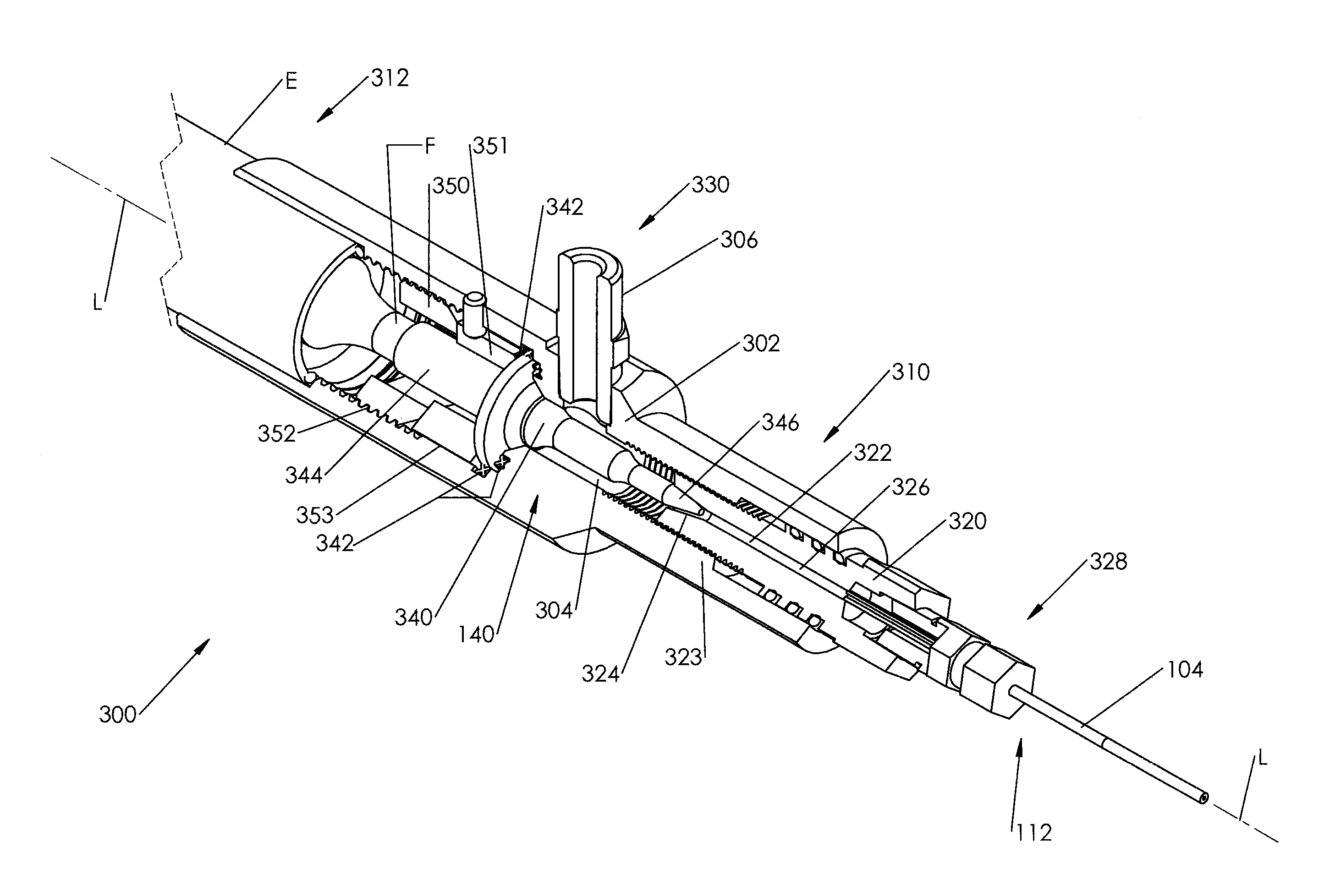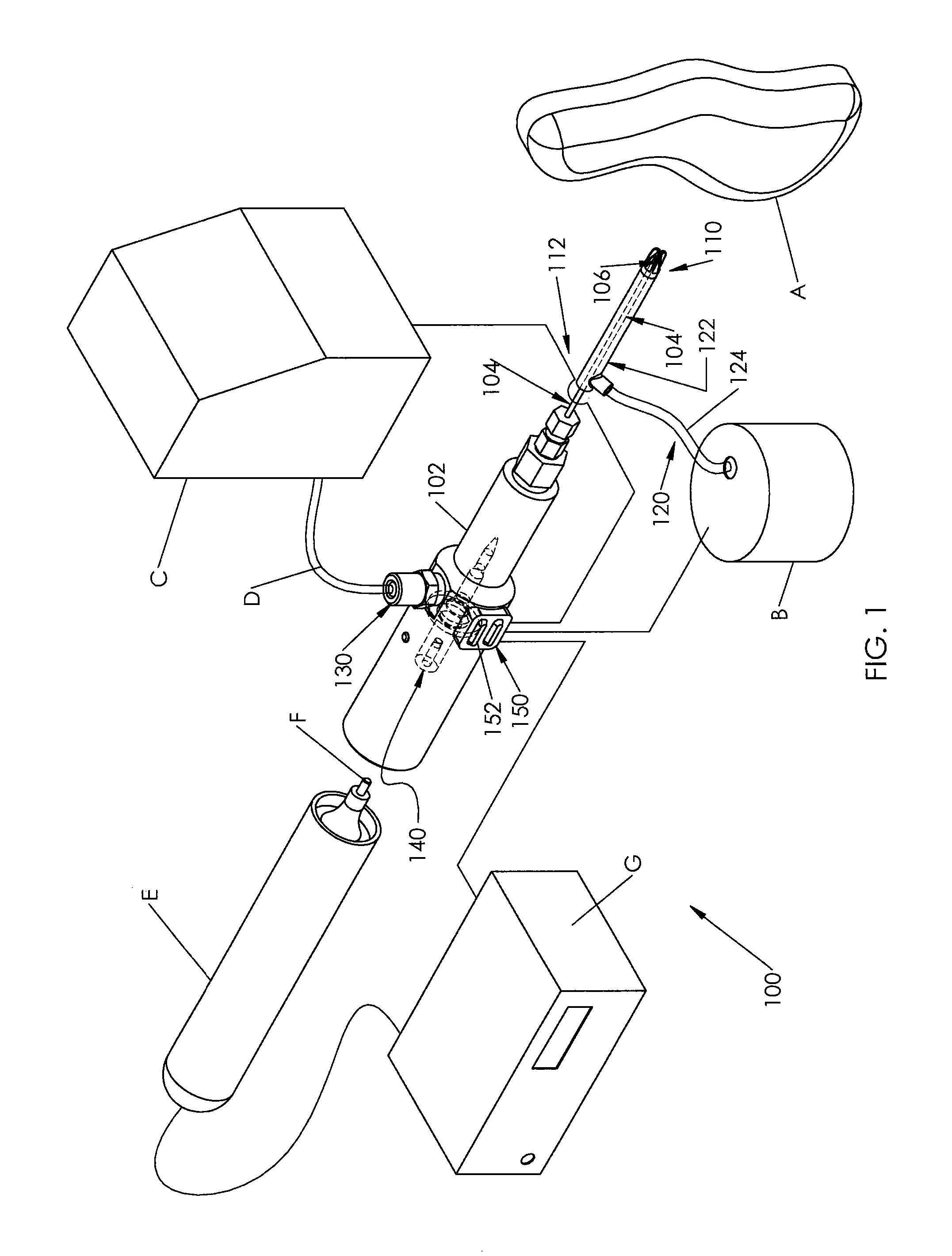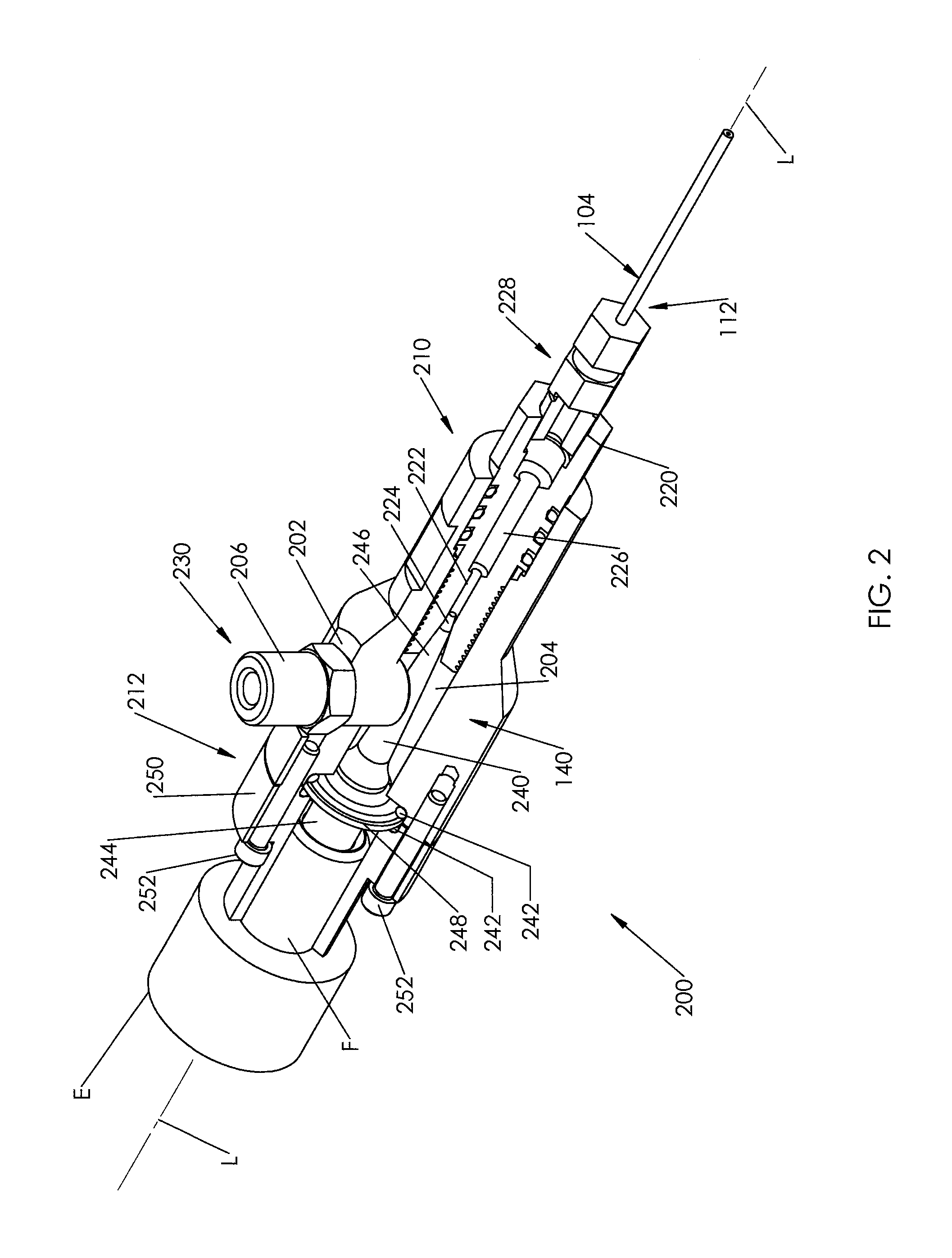Fluid jet cell harvester and cellular delivery system
a cell harvester and cell technology, applied in the field of fluid jet surgical devices, can solve the problems of inefficient tissue disruption, unintended tissue injury, and high pressure, and achieve enhanced harmonic matching, enhanced pulsation of fluid jet, and thin consistency
- Summary
- Abstract
- Description
- Claims
- Application Information
AI Technical Summary
Benefits of technology
Problems solved by technology
Method used
Image
Examples
Embodiment Construction
[0027]With reference first to FIG. 1, a pulsated fluidjet system 100 in accordance with an example embodiment is shown in schematic form. The system 100 is configured in the example embodiment for ejecting a pulsated fluid stream at an associated workpiece A for workpiece ablation and / or dissemination and for harvesting ablated and / or disseminated portions of the workpiece. In the example embodiment, the workpiece is tissue such as human or animal tissue. However, it is to be appreciated that the workpiece may be any object or objects as necessary or desired. The system 100 of the example embodiment comprises a handpiece apparatus 102 and a delivery tube apparatus 104 for interfacing the handpiece apparatus 102 with the associated workpiece A. A working tip 106 of the delivery tube apparatus 104 is provided on a distal end 110 of the delivery tube apparatus 104 opposite the proximal end 112 thereof, wherein the proximal end 112 is coupled with the handpiece apparatus 102. In the exa...
PUM
 Login to View More
Login to View More Abstract
Description
Claims
Application Information
 Login to View More
Login to View More - R&D
- Intellectual Property
- Life Sciences
- Materials
- Tech Scout
- Unparalleled Data Quality
- Higher Quality Content
- 60% Fewer Hallucinations
Browse by: Latest US Patents, China's latest patents, Technical Efficacy Thesaurus, Application Domain, Technology Topic, Popular Technical Reports.
© 2025 PatSnap. All rights reserved.Legal|Privacy policy|Modern Slavery Act Transparency Statement|Sitemap|About US| Contact US: help@patsnap.com



